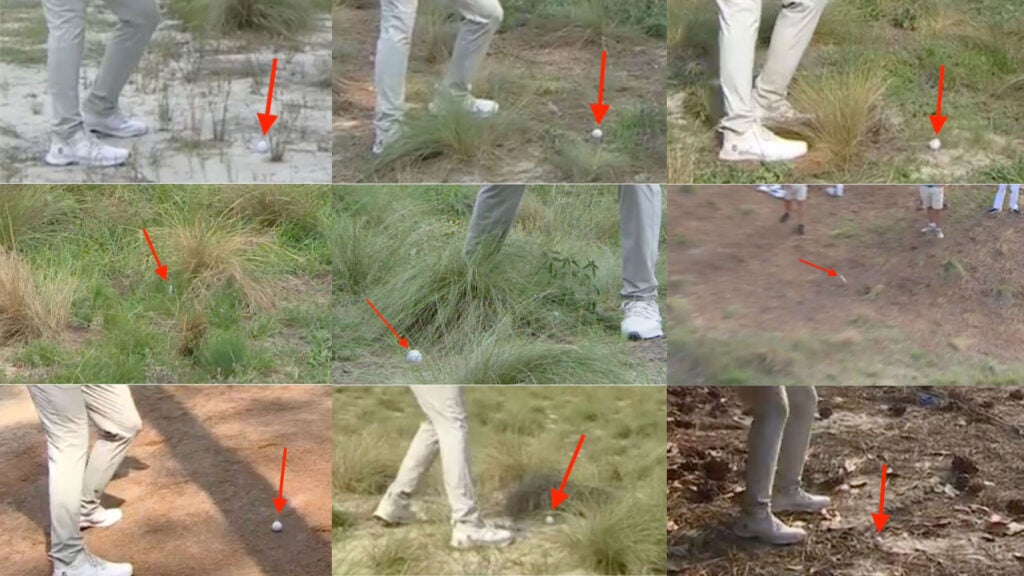Bryson DeChambeau's varied native-area lies in the final round of the U.S. Open.
USGA/NBC Bryson DeChambeau hit 5 of 13 fairways in the final round of the U.S. Open (and drove one green, on the par-4 13th).

If that 38.5% success rate sounds below average, that’s because it was — relative to both the field driving-accuracy average for the week (67.3%) and DeChambeau’s own average over the first three rounds (51.
9%). As you’re likely aware, though, in the end DeChambeau’s wayward driver did not cost him the trophy. He still edged Rory McIlroy by a stroke at Pinehurst No.
2 to win his second U.S. Open title .
There was a time when missing more than a few fairways at a U.S. Open was a recipe for scorecard disasters.
But Pinehurst presented a different kind of test than traditional Open venues, because its fairways are flanked not by juicy, club-grabbing rough but sandy native areas populated by such flora as Eastern prickly pear, pineweed and wiregrass. To steal a technical term from the Forrest Gump School of Golf Analysis, when players missed fairways last week, they were essentially reaching into a box of chocolates, because — all together now — they never knew what they were going to get. Among the potential lies: abutting wiregrass, recessed in a sandy depression, blessedly unimpeded in the open space among the vegetation, or any of about a dozen or so other scenarios ranging from playable to unpleasant.
It’s what “ Donald Ross called ‘the perfect rough,�.
















